Note: I would like to share with you through these few words, photographs and hyperlinked websites, a 3 Dimensional experience as though you were actually there with us. Click on any photograph and it should enlarge to different size ….. at least half screen or full screen size. It will be clearer in detail than the photo on the post. It will be as if you were really there looking at the actual scene. You are an arm chair traveller with us.
If you would also like to see the post in a larger or smaller size, I suggest you follow this procedure: If you right-handed, with your left hand, press down continuously on the Control Function Key with your left hand and with your right hand, move the little cursor wheel either forwards or backwards to make the text in the post larger or smaller.
____________________________________________________________________________________________
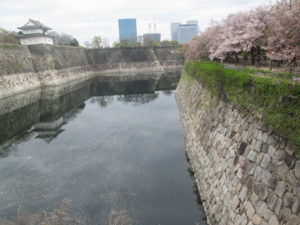
From Wikipedia, the free encyclopedia: The castle is one of Japan’s most famous landmarks and it played a major role in the unification of Japan during the sixteenth century of the Azuchi-Momoyama period.
Description
The main tower of Osaka Castle is situated on a plot of land roughly one square kilometer. It is built on two raised platforms of landfill support.
From Wikipedia, the free encyclopedia: The castle is one of Japan’s most famous landmarks and it played a major role in the unification of Japan during the sixteenth century of the Azuchi-Momoyama period.
Description
The main tower of Osaka Castle is situated on a plot of land roughly one square kilometer. It is built on two raised platforms of landfill supported by sheer walls of cut rock, using a technique called Burdock piling, each overlooking a moat. The central castle building is five stories on the outside and eight stories on the inside, and built atop a tall stone foundation to protect its occupants from attackers.
The castle grounds, which cover approximately 60,000 square meters (15 acres),[2] contain thirteen structures that have been designated as important cultural assets by the Japanese government including:
- Ote-mon Gate
- Sakura-mon Gate
- Ichiban-yagura Turret
- Inui-yagura Turret
- Rokuban-yagura Turret
- Sengan Turret
- Tamon Turret
- Kinmeisui Well
- Kinzo Storehouse
- Enshogura Gunpowder Magazine
- Three sections of castle wall all located around Otemon Gate.
________________________________________________________________
History
In 1583 Toyotomi Hideyoshi commenced construction on the site of the Ikkō-ikki temple of Ishiyama Hongan-ji. The basic plan was modeled after Azuchi Castle, the headquarters of Oda Nobunaga. Toyotomi wanted to build a castle that mirrored Oda’s, but surpassed it in every way: the plan featured a five-story main tower, with three extra stories underground, and gold leaf on the sides of the tower to impress visitors. In 1585 the Inner donjon was completed. Toyotomi continued to extend and expand the castle, making it more and more formidable to attackers. In 1597 construction was completed and Hideyoshi died. Osaka Castle passed to his son, Toyotomi Hideyori.
In 1600 Tokugawa Ieyasu defeated his opponents at the Battle of Sekigahara, and started his own bakufu (i.e., shogunate) in Edo. In 1614 Tokugawa attacked Toyotomi in the winter, starting the Siege of Osaka.[4] Although the Toyotomi forces were outnumbered approximately two to one, they managed to fight off Tokugawa’s 200,000-man army and protect the castle’s outer walls. Ieyasu had the castle’s outer moat filled, negating one of the castle’s main outer defenses.
During the summer of 1615, Hideyori began to restore the outer moat. Tokugawa, in outrage, sent his armies to Osaka Castle again, and routed the Toyotomi men inside the outer walls on June 4. Osaka Castle fell to Tokugawa, and the Toyotomi clan perished.
In 1620, the new heir to the shogunate, Tokugawa Hidetada, began to reconstruct and re-arm Osaka Castle. He built a new elevated main tower, five stories on the outside and eight stories on the inside, and assigned the task of constructing new walls to individual samurai clans. The walls built in the 1620s still stand today, and are made out of interlocked granite boulders without mortar. Many of the stones were brought from rock quarries near the Seto Inland Sea, and bear inscribed crests of the various families who contributed them.
In 1660, lightning ignited the gunpowder warehouse and the resulting explosion set the castle on fire. In 1665, lightning struck and burnt down the main tower. In 1843, after decades of neglect, the castle got much-needed repairs when the bakufu collected money from the people of the region to rebuild several of the turrets.
In 1868, Osaka Castle fell and was surrendered to anti-bakufu imperial loyalists. Much of the castle was burned in the civil conflicts surrounding the Meiji Restoration.
Under the Meiji government, Osaka Castle became part of the Osaka Army Arsenal (Osaka Hohei Kosho) manufacturing guns, ammunition, and explosives for Japan’s rapidly expanding Western-style military.[5]
In 1928, the main tower was restored after the mayor of Osaka concluded a highly successful fund-raising drive.
During World War II, the arsenal became one of the largest military armories, employing 60,000 workers.[5] Bombing raids targeting the arsenal damaged the reconstructed main castle tower and, on August 14, 1945, destroyed 90% of the arsenal and killed 382 people working there.
In 1995, Osaka’s government approved yet another restoration project, with the intent of restoring the main tower to its Edo-era splendor. In 1997, restoration was completed. The castle is a concrete reproduction (including elevators) of the original and the interior is intended as a modern, functioning museum.
Also see this website on Osaka Castle: http://www.osakacastle.net/english/history/
________________________________________________________________________________________
Entry into the Castle is through a very extensive Garden …..
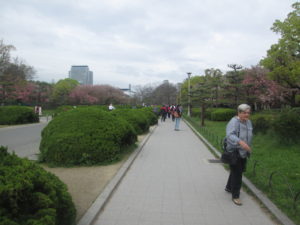
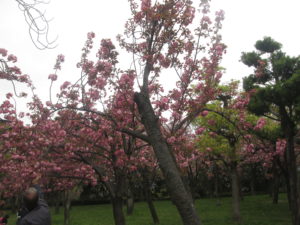
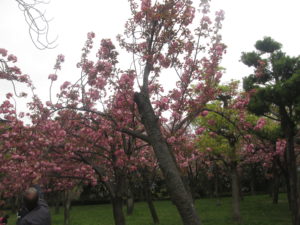
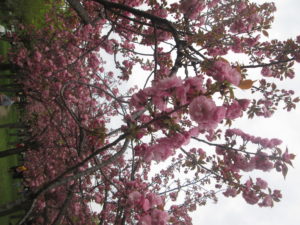
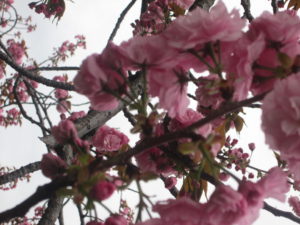
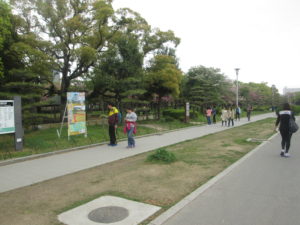

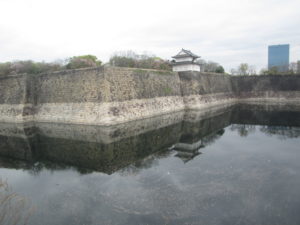
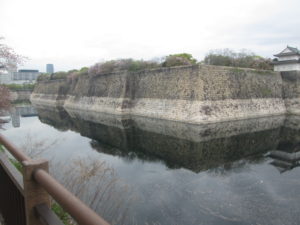
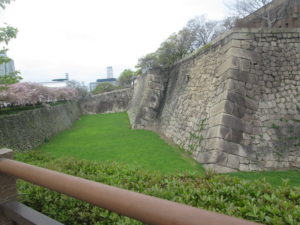

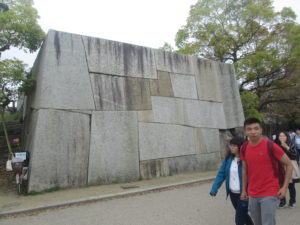
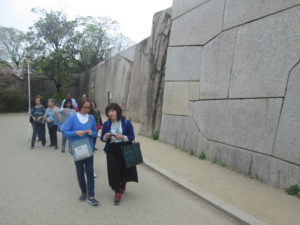
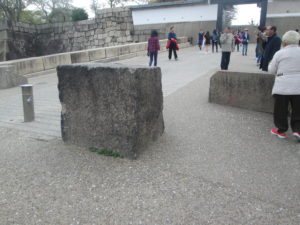
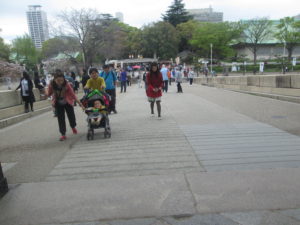
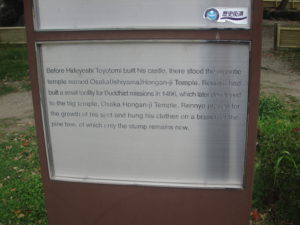
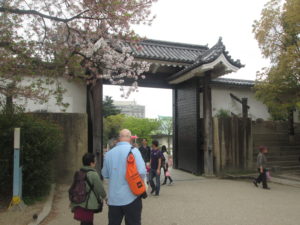

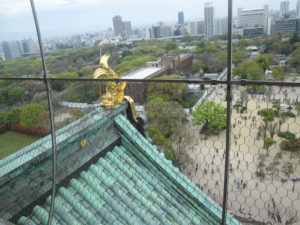
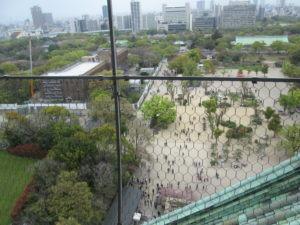
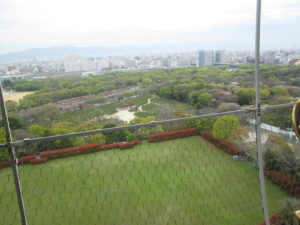

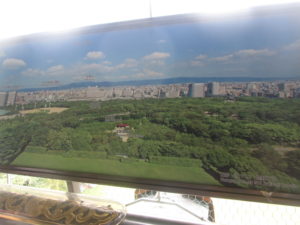
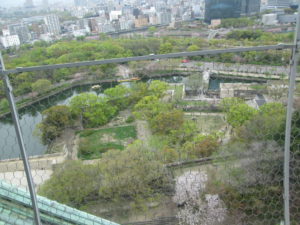
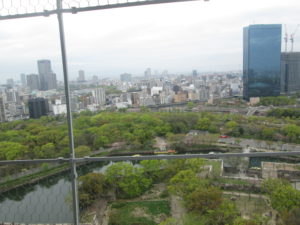
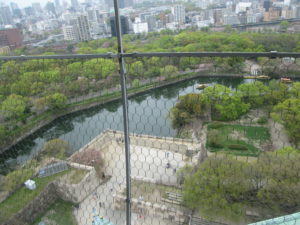
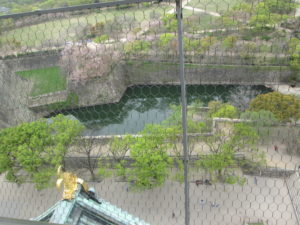
________________________________________________________________________________________
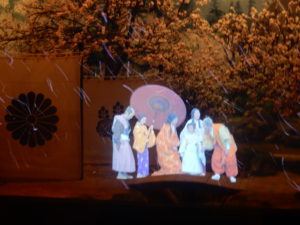
________________________________________________________________________________________
